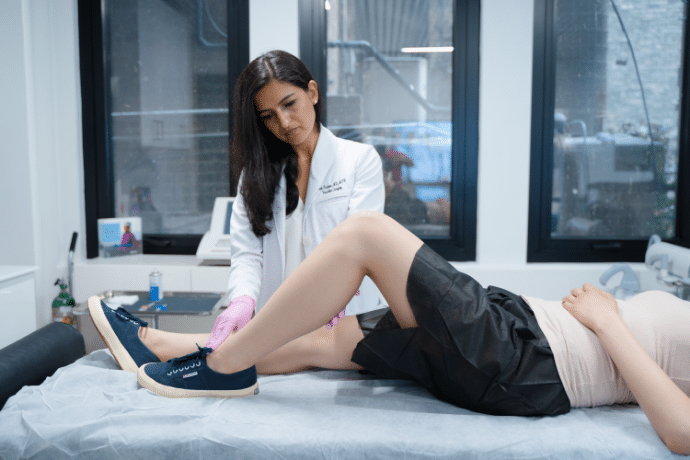If you have varicose veins, you may be curious about the various treatments available. Traditional vein-stripping and endovenous therapy are two popular approaches. You will learn about what are the treatment options for varicose veins and find out more about the variations between various varicose vein treatments from this article.
Comparison Of Endovenous And Conventional Vein-Stripping Procedures
Knowing About Varicose Veins
It is better to define varicose veins before moving on to the therapies. Those bulging, twisted veins that typically form on your legs are called varicose veins. They occasionally produce aches, suffering, or discomfort. Let's now examine how endovenous and conventional vein-stripping procedures operate.

Endovenous Treatment
Endovenous therapy for varicose veins is like a modern superhero. There are no significant cuts because it is less invasive. In order to treat the issue from the inside, the doctor utilizes a thin tube known as a catheter. After inserting the catheter, the vein is sealed off using heat or a specific glue. This lessens the bulging veins and improves blood flow.
Traditional Vein-Stripping
It is time to discuss conventional vein stripping. Think of it as being similar to removing a pesky weed. With this technique, the surgeon manually removes the varicose veins by making cuts close to them. It usually requires stitches and is a little bit more intrusive than endovenous therapy.
Comparing The Procedures
Benefits Of Endovenous Treatment:
- Less Pain And Scarring
There is less pain with endovenous treatment than with conventional vein stripping since the incisions are small. You will consequently feel better faster. And what's this? Smaller scars are also a result of the little incisions.
- Faster Recovery
Your body recovers more quickly from endovenous treatment because it doesn't require significant wounds. Compared to traditional vein-stripping, you can resume your normal activities sooner.
- Local Anesthesia
Endovenous therapy typically only requires local anesthetic, so you remain conscious throughout. Although it may seem dangerous, doing this is actually better for your body and safer.
Benefits Of Traditional Vein-Stripping
- Suitable For All Veins
No matter how big or small the varicose veins are, traditional vein-stripping can treat them all. It's a one-size-fits-all approach.
- Long-Term Results
According to certain research, conventional vein stripping may produce longer-lasting benefits than endovenous therapy. You might not need to worry about those varicose veins returning very soon as a result.
Things To Look Out In Endovenous Treatment
- Not For Everyone
Everyone may not be a good candidate for endovenous therapy, especially if you have certain medical issues. If you're a good candidate, your doctor will determine.
- Possible Need For Multiple Sessions
For the best results, endovenous therapy may occasionally require more than one session. More trips to the doctor's office may result from this.

Things To Look Out In Traditional Vein-Stripping
- More Invasive
Traditional vein stripping requires larger incisions and more invasive techniques, which might increase discomfort while the patient is recovering. But consulting your phlebologist can diminish these effects.
- General Anesthesia
Contrary to endovenous therapy, traditional vein-stripping typically necessitates general anesthesia, keeping you asleep. Compared to local anesthesia, this may present additional risks, but with proper measures, your doctor can reduce these risks.
Conclusion
Dealing with varicose veins can be quite challenging, but with proper consultation and the right treatment method, relief from this pain can be achieved. After reading this article, you now know What Kind of Doctor is a Vein Specialist, and you have a better understanding of endovenous and conventional vein-stripping procedures for varicose veins.





